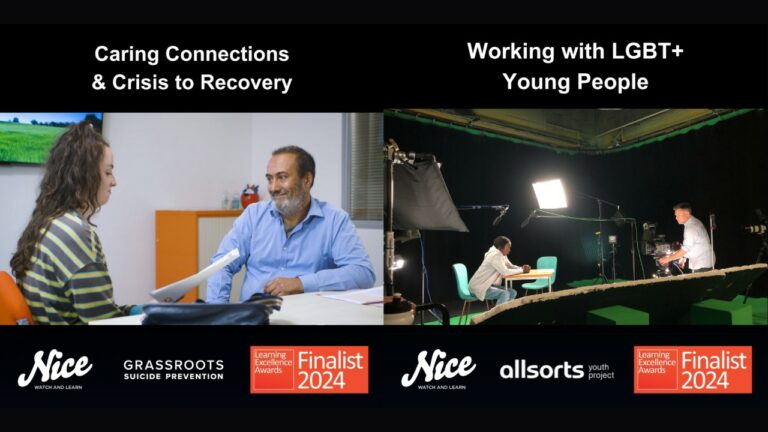Here is a transcript of Ep.2 – It’s a Sin.
Hi everyone, my name’s Tom Hickmore and in this episode of “What can TV teach L&D?” I’m looking at It’s a Sin.
I make drama for learning, so I’m taking popular TV drama and looking at it with an analytical eye, asking “What can we learn from this that we can be applied in the field of learning and development?”
It’s a Sin is Channel Four’s drama series about the coming of AIDS to the UK told through the experience of a group of young gay men and their woman friend. This is an issue drama, and most learning and development drama is issue drama, to there’s a lot we can learn here.
This drama isn’t a simple hero’s journey, although there is one character who’s more central than the rest. We follow the story of several young men. So, it’s more of a collective hero. But the unifying element to the whole story, is the story of the disease – the issue.
Because issue dramas are about issues, there is always a lot of exposition to be to be dramatized. It’s not ‘let’s create a character and see where it takes us’, rather it’s ‘let’s tell the story of an issue and do what we can to bring it to life by portraying it with characters’.
And this is exactly how we work in learning and development. But our issues are, generally, far less grand than a mystery illness. We make films about diversity or managing sickness or the need for compliant behaviour. Learning and development drama focusses on areas of work where our private feelings are most exposed in the workplace. It’s the overlap of public and private. This stuff needs to be governed. And stories provide a great way to do it.
Stories are moral. But you don’t always have to draw them to a conclusion. You message is strongest when you make your audience work to make meaning.
So, let’s have a look at a scene from It’s a Sin. This scene exemplifies two of the elements I’ve mentioned. Firstly, it dramatizes exposition, that is to say, it makes the communication of information into a dramatic event. And it also allows the audience to draw their own conclusions.
To engage an audience, you absolutely must allow them to be active. In L&D there is a lot of concern that if we don’t tell people how to think we’re not going to be effective. In fact, the reverse is true.
So, before we watch this scene a bit of context:
The men in the group are pretty much in denial about AIDS. They feel it’s just part of the general wash of media anti-gay lies that they are subject to. Let’s face it, a ‘gay plague’ as the tabloids called it, does sound unlikely. But the woman in the group has just returned from a secret meeting with one of the men, ‘Gloria’, who is HIV positive and getting ill very quickly. So ill that he’s been forced to return to his gay-hating parents. He’s sworn her to secrecy because of the prejudice he’ll receive.
Want to hear more about what TV can teach L&D? Contact us to sign up to our mailing list.







